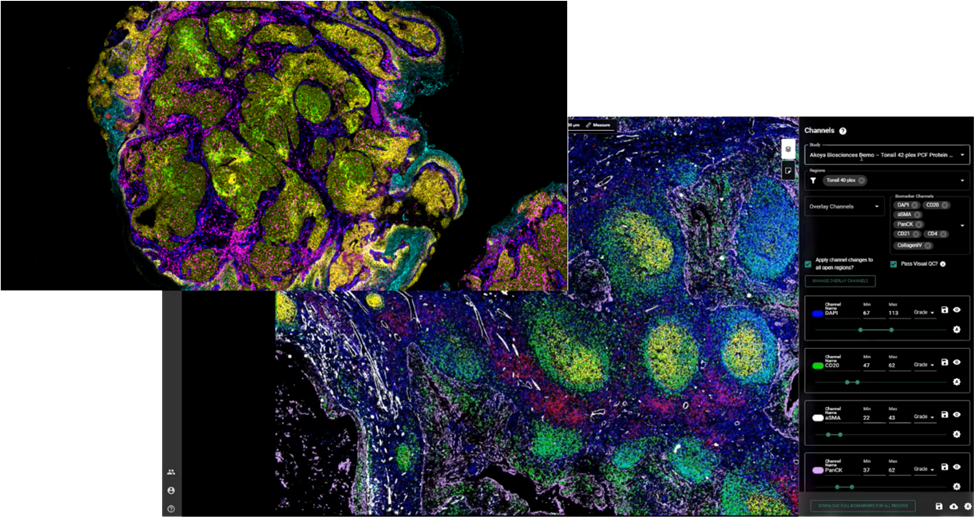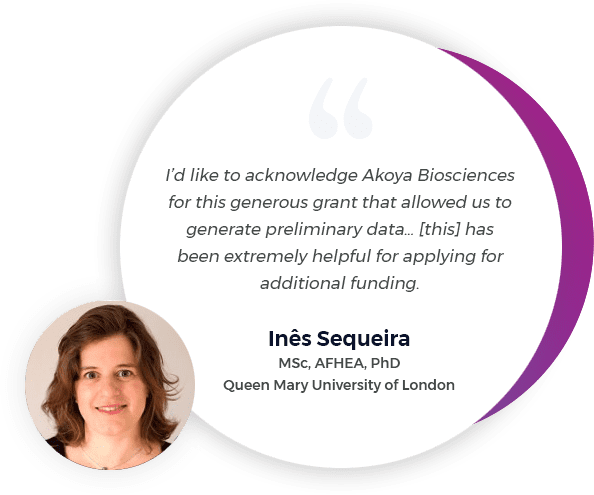Spatial Biology Grants
Funding opportunities to support your next discovery
Apply to Win a Spatial Biology Grant
Submit your application by September 1, 2023
We’re dedicated to advancing research that grows our collective understanding of biology and contributes to the improvement of human health. If you have an interesting project that would benefit from spatial phenotyping, apply for a chance to win a spatial biology grant.
We are currently accepting applications for the 2023 Spatial Biology Discovery Grant, which is aimed at scientists pursuing immuno-oncology research.


Providing opportunities for researchers involved in deep immune profiling projects to obtain a new perspective on their research through the power of PhenoCycler.
Frequently Asked Questions (FAQS)
What is a spatial biology grant?
A spatial biology grant is an opportunity for you to advance your research by obtaining rich spatial phenotyping data from your tissue samples for free. We host grant programs several times per year, and one or more awardees are selected for each program.
Who performs the staining and imaging?
We partner with high-quality service providers to execute the staining, imaging for grant awardees. In most cases, all you have to do is send us your tissue sections, and we’ll send you back your spatial data!
How do I apply?
Simply submit an application telling us about your project idea and how spatial phenotyping can help accelerate your research.
When is the next grant opportunity?
Grants open for submissions several times per year. The best way to stay informed is by bookmarking this page and checking back frequently.
Past Grants and Recipients
Fusion Spatial Multiomics Grant Program Winners

Scientific Director, Henry Ford Pancreatic Cancer Center Henry Ford Health

5th year P.h.D Candidate, Cancer Biology University of Michigan / Henry Ford Pancreatic Cancer Center
100-plex Grant Program Winner

Resident Physician
Harvard Radiation Oncology Program
Massachusetts General Hospital
Francis Crick Institute Spatial Biology Grant

Rute Ferreira
Postdoctoral Researcher
The Francis Crick Institute
Spatial Phenotyping Grant Program Winner

Group Leader – Barts Charity Lecturer
Institute of Dentistry, Barts and The London School of Medicine and Dentistry
Queen Mary University of London
Spatial Multiomics Grant Award – PhenoCycler

Assistant Professor
Yale Center of Molecular and Cellular Oncology, Yale School of Medicine
Resources
How to write a strong proposal
Want to maximize your chances? We recommend you check out this spatial phenotyping whitepaper to help you outline in your abstract how a spatial approach will help accelerate your research.
Inspiration from a past spatial biology grant recipient
At AACR 2023, we had the pleasure of catching up with Inês Sequeira, MSc, AFHEA, PhD from Queen Mary University of London – our first ever grant winner – and hearing from her about the awesome data she generated on the heterogeneity of oral cancers using her grant award. You can watch a recording of her poster presentation here.


